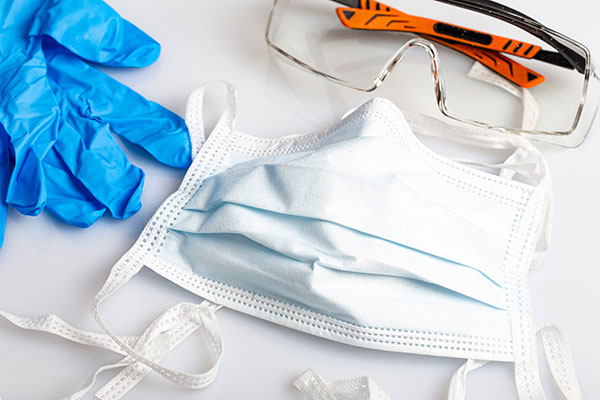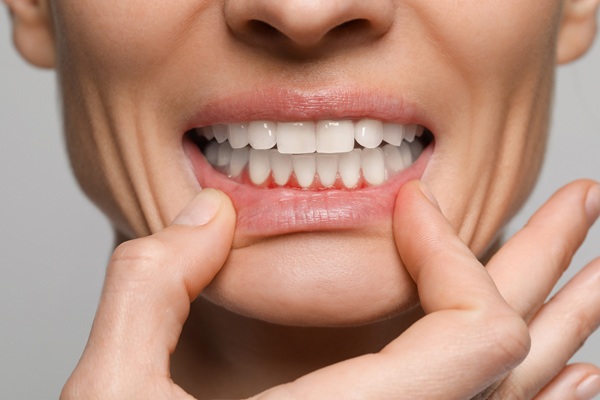What Does PPE per CDC Guidance Involve for Rowley Family Dental Center?

The use of PPE per CDC guidance is for a primary objective, which is to protect dental care professionals at Rowley Family Dental Center and patients from infection. The CDC guidelines cover selection and use of Personal Protective Equipment, or PPE to ensure safe practices when donning, using and removing PPE per CDC guidelines. This goal also improves patients’ safety. According to the Occupational Safety and Health Administration, PPE is “specialized clothing or equipment worn by an employee for protection against infectious materials.”
Details of PPE per CDC guidance
According to the CDC, donning of PPE should happen before meeting with the patient. The PPE is designed to protect both the dental professional and patient by restricting direct contact and contamination of inert surfaces around the dental office. The PPE is taken off and disposed of carefully. Respirators are removed outside the treatment room. Dentists will perform proper hand hygiene after removing PPE per CDC guidance.
The sequence for donning PPE
Dental professionals wear gowns first before wearing masks or respirators. Then, they will wear protective eyewear or face shields, followed by gloves. The combination of PPE used has implications on the order of placement. It is vital to follow the protocol for PPE per CDC guidance.
There are two main physical sides of PPE – contaminated and clean. Contaminated sides are generally on the outside. This part of the PPE has or has possibly been in contact with materials, body sites or environmental surfaces that may have been inhabited by infectious organisms. Clean areas are typically inside, ties around the head or neck and back of the overalls.
The order of removing PPE per CDC guidance is gloves first, then protective eyewear and face shields. Gowns come off next, and finally, respirators or masks. PPE removal should occur close to the doorway of the treatment space, not outside. The only exclusion is respirators, which can be taken off outside of the treatment room, upon closing the door. Hand hygiene facilities should be ready immediately, which should include a sink with hand hygiene products or alcohol-based hand sanitizers.
When to use PPE per CDC guidance
PPE usage is an essential aspect of standard infection control precautions. Standard precautions assume that saliva, bodily fluids and blood from any patient is infectious. The use of PPE per CDC guidance and other infection control protocols is important to prevent transmission in dental and medical settings. The nature of the interaction between patients and dental professionals determine the use of PPE. Ideally, any procedure that is likely to generate spatter, aerosols, fluids, secretions or excretions require the use of PPE per CDC guidance, including gloves, gowns, masks, protective eyewear or face shields.
Outer protective clothing protects against contamination, especially when there is a risk of skin or cloth contamination. The same situations that require masks, gloves, and protective eyewear also need protective clothing. Examples include smocks, lab coats, aprons, gowns and clinical jackets.
PPE clothing should be resistant to fluids but not necessarily fluid-proof. Protection and comfort are both important parts of PPE per CDC guidance. The aim is to cover most of the regular work clothes. The two basic types of protective clothing are disposable and reusable, which must be changed if visibly contaminated at the end of the day.
The use of PPE per CDC guidance
The use of PPE per CDC guidance helps to protect dental practitioners adequately from exposure to infections in the dental office.
Request an appointment here: https://rowleyfamilydental.com or call Rowley Family Dental Center at (978) 364-8516 for an appointment in our Rowley office.
Check out what others are saying about our services on Yelp: Read our Yelp reviews.
Recent Posts
Seeking a straighter smile often begins with a visit to a cosmetic dentist. These professionals offer advanced teeth straightening options that improve alignment while also considering the appearance of the entire smile. Whether correcting mild crowding or closing noticeable gaps, a cosmetic dentist evaluates structure, bite, and facial balance to create a personalized plan that…
Gum disease is a common yet often overlooked condition that affects millions of adults worldwide. It begins subtly, often without noticeable pain, making it a silent threat to both oral and overall health. Left untreated, gum disease can progress from mild inflammation to a severe infection, potentially leading to tooth loss and contributing to other…
A preventive dentist promotes long-term oral wellness by focusing on early detection, regular checkups, and proactive measures to protect teeth and gums from disease. By prioritizing prevention, you can avoid many dental issues before they even begin. Explore some of the most frequently asked questions about preventive dentistry, gain valuable insight that can help you…
Getting a dental filling is a common procedure where a dentist restores the integrity of a decayed or damaged tooth. After placing a filling, you need to take the correct steps during recovery to ensure its durability and long-term effectiveness. Avoiding certain activities and habits promotes long-term oral health and prevents potential complications.One of the…


